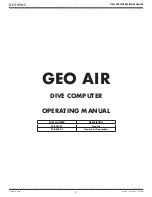
16
FLOWSIC200 · Operating Instructions · 8013271/1CJ9/V2-0/2022-01 · © SICK Engineering GmbH
Product description
2.1.3
Functional principle
The FLOWSIC200 works according to the principle of ultrasonic transit time difference
measurement. Sender/receiver units are mounted on both sides of a tunnel at a certain
angle of inclination to the gas flow (
).
The sender/receiver units contain piezoelectric ultrasonic transducers which operate
alternately as senders and receivers. The sound pulses are emitted at an angle
to the
flow direction. Depending on angle
and the flow velocity, the transit time of the respective
sound direction varies as a result of certain “acceleration and braking effects” (formulas
2.1 and 2.2). The higher the flow velocity and the smaller the angle to the flow direction are,
the higher the difference in the transit times of the sound pulses.
Flow velocity v is determined from the difference of both transit times, independent of the
sound velocity value. With this measuring method, changes of the sound velocity due to
pressure or temperature fluctuations therefore have no influence on the flow velocity
determined.
Fig. 4
Functional principle of the FLOWSIC200
Tak
-40°
60°
18,7°
SOPAS ET
Sender/receiver unit Master
MCU
v = Flow velocity in m/s
L = Measuring distance in m
= Angle of inclination in
°
t
v
= Sound transit time in flow direction
t
r
= Sound transit time against the flow
Sender/receiver unit Slave
v =
·
(
-
)
L 1
1
2
·
cos
t
v
t
r
Flow direction
t
r
L
t
v
















































